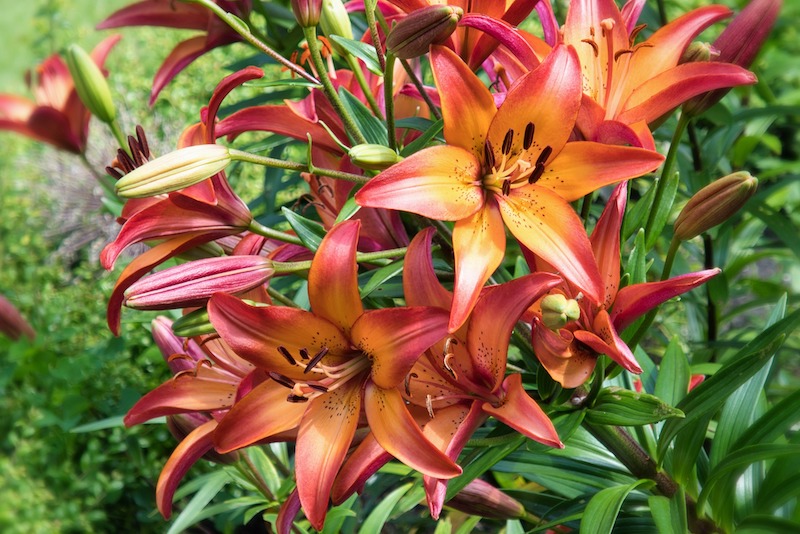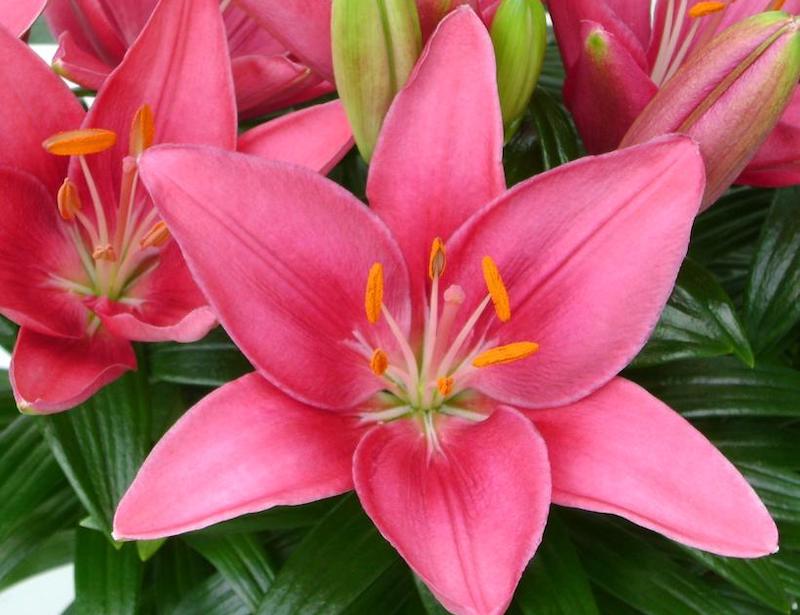Lilies are known for their beautiful, fragrant blooms, but sometimes they may not flower as expected. The blooming season for lilies typically runs from late spring to early fall, depending on the specific variety. If your lilies are not flowering during this time, there may be a few reasons. One possibility is that the plant is not getting enough sunlight. Lilies need at least 6 hours of sunlight per day to thrive, so be sure to place them in a location that gets plenty of light. Another reason for the lack of blooms may be a lack of nutrients. Fertilizing your lilies with a balanced fertilizer after blooming can provide the necessary nutrients for growth and blooming the following year. If you see buds on the plant that are not opening, it may be due to a lack of water or extreme temperatures. Make sure to water your lilies regularly, and protect them from extreme heat or cold. With the proper care and attention, your lilies should be able to produce beautiful blooms.

Common Reasons Why Lilies Aren’t Blooming
There can be several reasons why lilies are not blooming, and it is essential to identify the root cause to fix the problem. One common reason is improper pruning. Prune lilies after flowering and only remove dead foliage. Removing the foliage before it dies back can prevent the plant from storing the energy it needs to bloom the next year. Small bulbs may not bloom the first year because they have not stored enough energy before winter. Select bulbs that are large and healthy to ensure the best blooms.
Another reason may be a lack of fertilization and overcrowding. Lilies need nutrients for growth and flowering and may not be able to access them if the bulbs are crowded. Additionally, if the container is too small or the plant is root bound, it may struggle to produce blooms.
The depth of planting can also be a problem, as freezing, wet conditions can damage bulbs planted too shallow. Be sure to plant your lilies at a depth of 4x the diameter of the bulb if you live in a colder climate. On the flip side, lilies need a period of cold exposure to bloom well. Your lilies may not bloom if you live in a climate with warm winters. Finally, the weather can also play a role in blooming. Extreme heat or drought can cause the plant to go dormant or prevent it from blooming.

Pruning Lillies To Help Them Bloom
Pruning lilies too early can prevent the plant from producing enough energy to support blooming the following year. Avoid cutting back the foliage until it has completely died back at the end of the summer. Deadheading or removing spent flowers is useful in preventing the plant from forming seed, which costs the plant added energy. To prune lilies, remove all spent growth at the end of the season. You can remove diseased or damaged growth at any time. Use clean, sharp pruning shears to avoid damaging the plant. If you notice that deer or rabbits have "pruned" your lilies, you may need to protect the plants with fencing or a spray deterrent. Pruning lilies annually can help keep them healthy and encourage blooming, but be sure to do so at the right time and in the proper manner to avoid damaging the plant.
Fertilizing Lilies To Help Them Bloom
Fertilizing lilies by providing the necessary nutrients for healthy growth also promotes blooming. A balanced fertilizer, such as a 20-20-20 formula, can be applied after blooming to provide the right balance of nitrogen, phosphorous, and potassium. The nutrients help the plant continue to produce and store energy for next year's flowers. It is essential to follow the instructions on the fertilizer label, as over-fertilizing can lead to problems such as leaf burn or reduced blooms. Avoid using a formula with too much nitrogen, which can encourage foliage growth at the expense of flowering.

Get Lilies To Produce More Blooms
If your lilies are not producing enough blooms, there are a few steps you can take to encourage more flowers. First, make sure the plant is getting enough sunlight. Lilies need at least 6 hours of sunlight per day to thrive, so be sure to place them in a location that gets plenty of light. Prevent overcrowding by dividing mature lily beds every 2-3 years to ensure enough space for each bulb. Overwatering and conversely drought can also prevent lilies from blooming, so be sure to water your lilies regularly, but not to the point of saturation. Finally, protecting plants from pests and diseases ensures healthy growth and blooming.
Why Lilies Aren’t Blooming
- The plant is not getting enough sunlight.
- The plant is not getting enough nutrients.
- The plant is being overwatered or is too dry.
- Pests or diseases have damaged the plant.
 |
Author Chris Link - Published 1-27-2023 |
